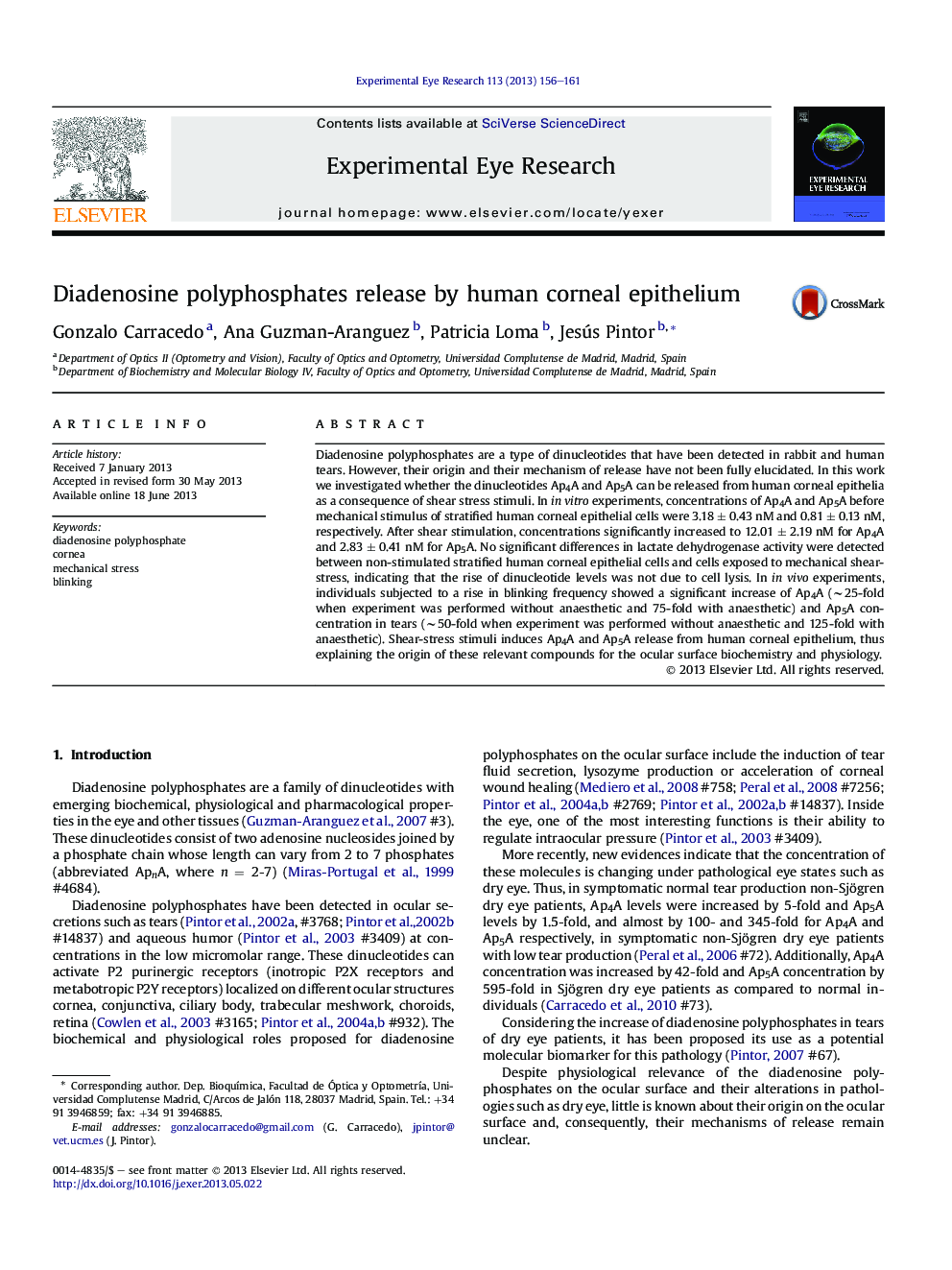| Article ID | Journal | Published Year | Pages | File Type |
|---|---|---|---|---|
| 6197279 | Experimental Eye Research | 2013 | 6 Pages |
â¢We studied if the dinucleotides are released from corneal epithelium by shear stress.â¢In Vitro experiments showed an increase dinucleotides amounts after shear stress.â¢Shear-stress by blinking induces dinucleotides release from corneal epithelium.â¢Dinucleotides release is not produced from corneal nerve terminal stimulation.â¢We report the origin of these relevant compounds for the ocular surface physiology.
Diadenosine polyphosphates are a type of dinucleotides that have been detected in rabbit and human tears. However, their origin and their mechanism of release have not been fully elucidated. In this work we investigated whether the dinucleotides Ap4A and Ap5A can be released from human corneal epithelia as a consequence of shear stress stimuli. In in vitro experiments, concentrations of Ap4A and Ap5A before mechanical stimulus of stratified human corneal epithelial cells were 3.18 ± 0.43 nM and 0.81 ± 0.13 nM, respectively. After shear stimulation, concentrations significantly increased to 12.01 ± 2.19 nM for Ap4A and 2.83 ± 0.41 nM for Ap5A. No significant differences in lactate dehydrogenase activity were detected between non-stimulated stratified human corneal epithelial cells and cells exposed to mechanical shear-stress, indicating that the rise of dinucleotide levels was not due to cell lysis. In in vivo experiments, individuals subjected to a rise in blinking frequency showed a significant increase of Ap4A (â¼25-fold when experiment was performed without anaesthetic and 75-fold with anaesthetic) and Ap5A concentration in tears (â¼50-fold when experiment was performed without anaesthetic and 125-fold with anaesthetic). Shear-stress stimuli induces Ap4A and Ap5A release from human corneal epithelium, thus explaining the origin of these relevant compounds for the ocular surface biochemistry and physiology.
